How Red Bull became a billion-dollar global empire
The energy drink that grew wings and conquered the world
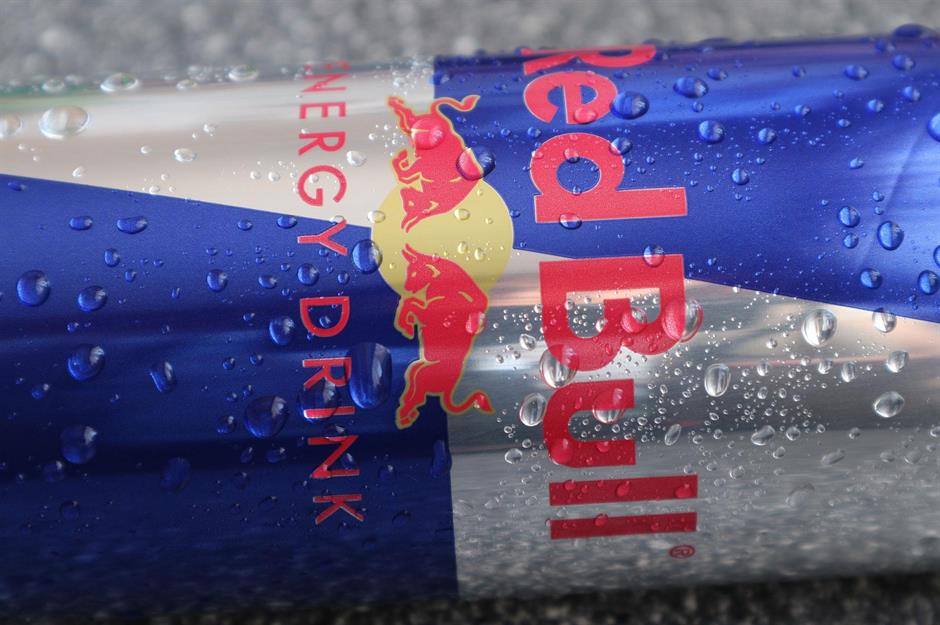
From its humble Thai origins almost 50 years ago, Red Bull has soared to unprecedented heights to become the planet's number-one energy drink. Synonymous with high-octane adventure, the caffeinated beverage has reached iconic status, turbo-charged by the brand's marketing strategy – a potent mix of sports and music sponsorship, guerrilla campaigns, viral videos and more.
So how did a little-known drink become a billion-dollar global empire? Read on to discover the surprising story of Red Bull's incredible rise and the two men who got remarkably rich along the way...
All dollar values in US dollars
Chaleo Yoovidhya launches Red Bull precursor Krating Daeng

Red Bull's rise to global domination began in 1976 with the launch of Krating Daeng, the precursor to the world's leading energy drink. The beverage was the brainchild of pharmaceutical entrepreneur Chaleo Yoovidhya. Born in rural Thailand to poor immigrant parents from China, Yoovidhya had a very humble upbringing on the family's small-scale duck farm.
Despite minimal formal education, he moved to Bangkok in the mid-1950s to sell antibiotics and swiftly built a successful drug-making business called TC Pharmaceutical Industries. The idea for an energy drink came to him in the early 1970s after a flash of “divine inspiration”.
Krating Daeng's Japanese inspiration
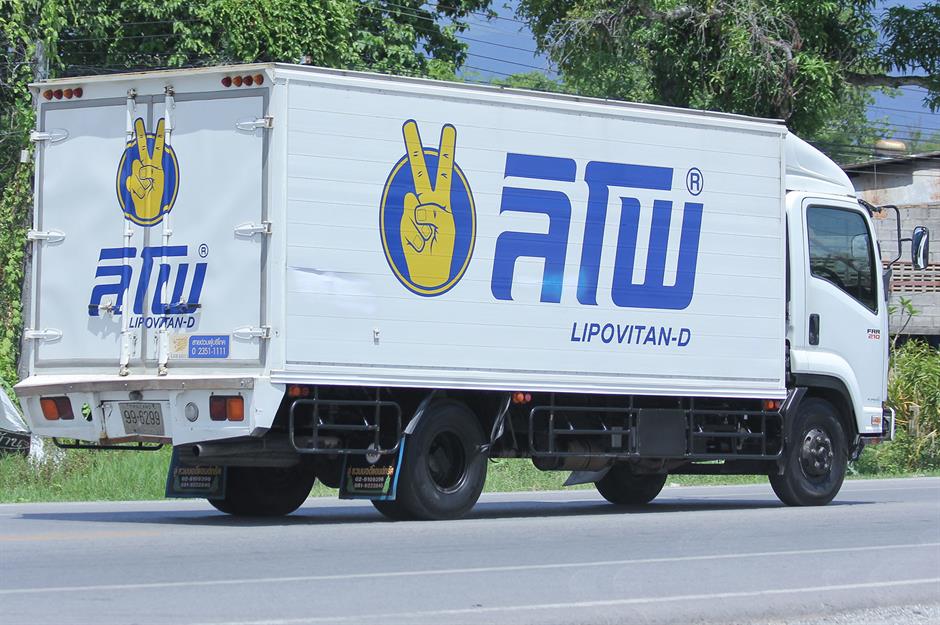
At the time, South Korean and Japanese energy drinks were all the rage in Thailand, mainly among the urban middle classes. The market leader was a Japanese tonic, Lipovitan D, launched in 1962.
Yoovidhya studied the ingredients, identifying caffeine and the amino acid taurine as the key components, and produced his own version. In its home market of Japan, Lipovitan D was targeting truck drivers, factory staff, and other blue-collar workers, but it was too expensive for Thailand's working classes. Aiming squarely at this untapped market, Yoovidhya produced a cut-price alternative with the same active ingredients and a higher sugar content to appeal to the Thai sweet tooth.
Krating Daeng's name origin
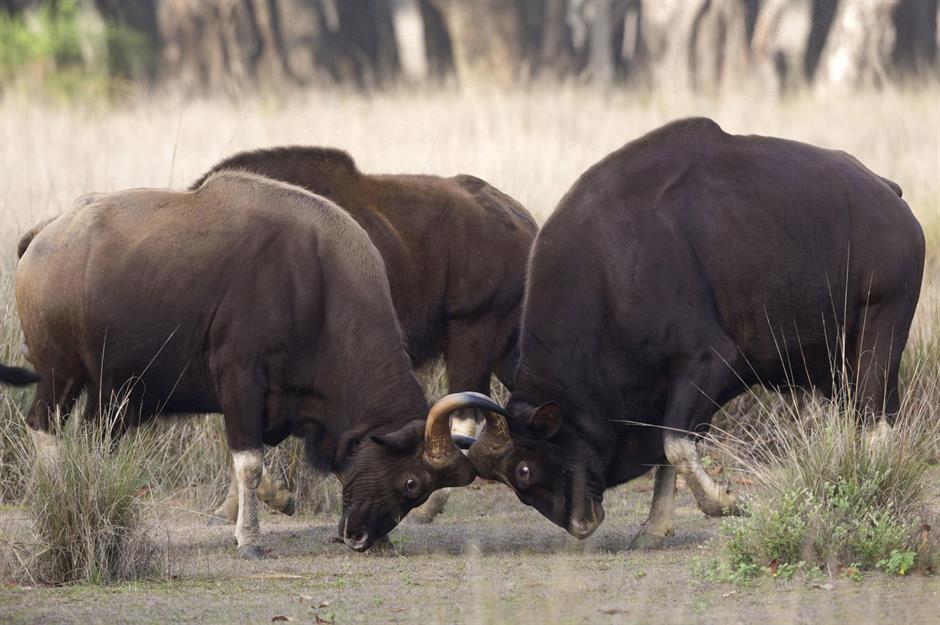
Yoovidhya called his creation Krating Daeng, which translates to "Red Gaur", a nod to the active ingredient taurine, which derives its name from the Latin for bull (since, incidentally, it was first extracted from ox bile). Native to Southern Asia, the gaur is the largest bovine species in the world and symbolises strength, power, and virility.
A dab hand at marketing, Yoovidhya devised a killer logo to showcase the brand: two red gaur bulls charging at each other backdropped by a yellow sun, reportedly inspired by a Chinese zodiac image. The colour red was chosen because it represents passion and perseverance, while the yellow sun alludes to energy and vitality.
Krating Daeng becomes Thailand's leading energy drink and a major Muay Thai sponsor
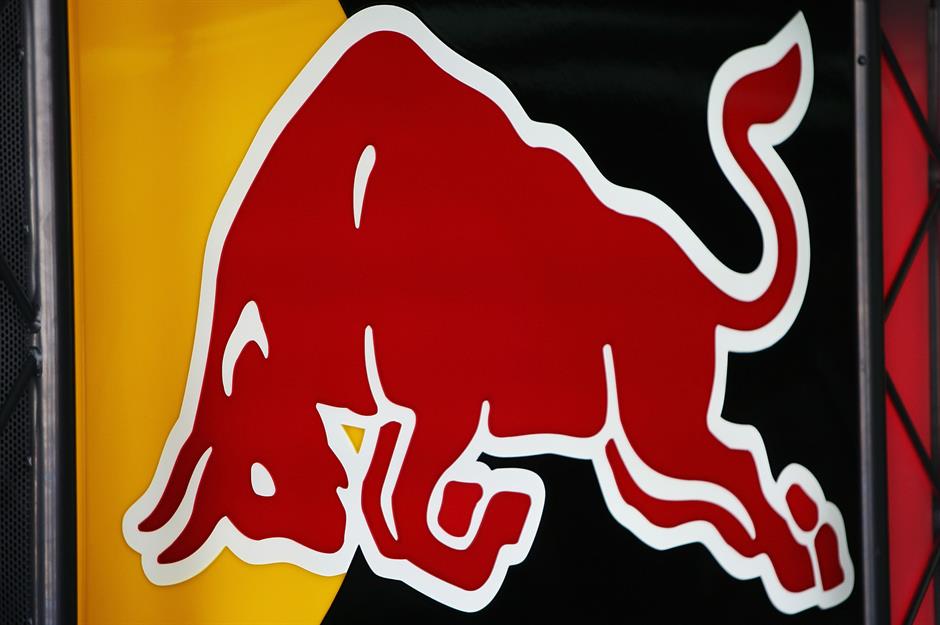
Eschewing the affluent city dwellers, Yoovidhya started out marketing the drink to Thailand's rural workers, who were drawn to the striking logo as it evoked the “lively spirit” of bullfights that were once a common occurrence in the Thai countryside, according to the South China Morning Post.
Yoovidhya's clever marketing efforts worked a treat. By 1978, Krating Daeng had become the best-selling energy drink in Thailand. The savvy entrepreneur then started promoting the beverage to the nation's Muay Thai boxing community. Major sponsorship deals followed, cementing Krating Daeng's market share and setting the stage for Red Bull's sports-driven brand identity.
Dietrich Mateschitz discovers Krating Daeng
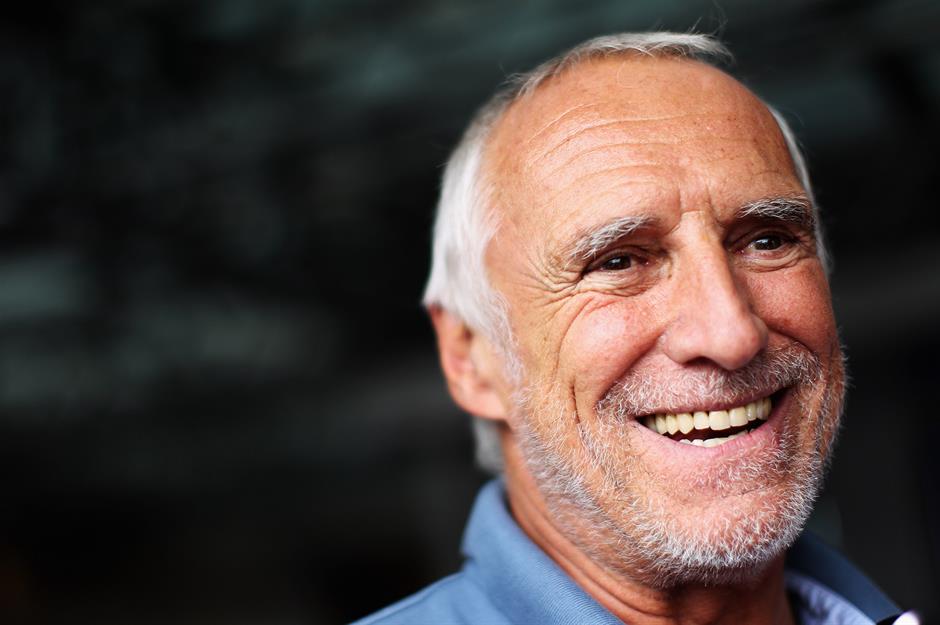
Dietrich Mateschitz entered the frame one fateful day in 1982. A marketing executive for German consumer goods firm Blendax, he'd just arrived in Bangkok after a 14-hour flight from Austria to visit the company's local distributor, which happened to be Yoovidhya's TC Pharmaceutical Industries.
Yoovidhya offered the weary traveller a glass of Krating Daeng and Mateschitz immediately perked up. “One glass and the jet lag was gone,” he later remarked. The story goes, on every business trip to Bangkok, his first stop would be for a bottle of Krating Daeng. Then he happened to read a news report lauding Taisho Pharmaceutical, the maker of Lipovitan D, as Japan's biggest taxpayer. Mateschitz's interest in Krating Daeng rapidly turned to obsession.
Dietrich Mateschitz proposes a Western version of Krating Daeng
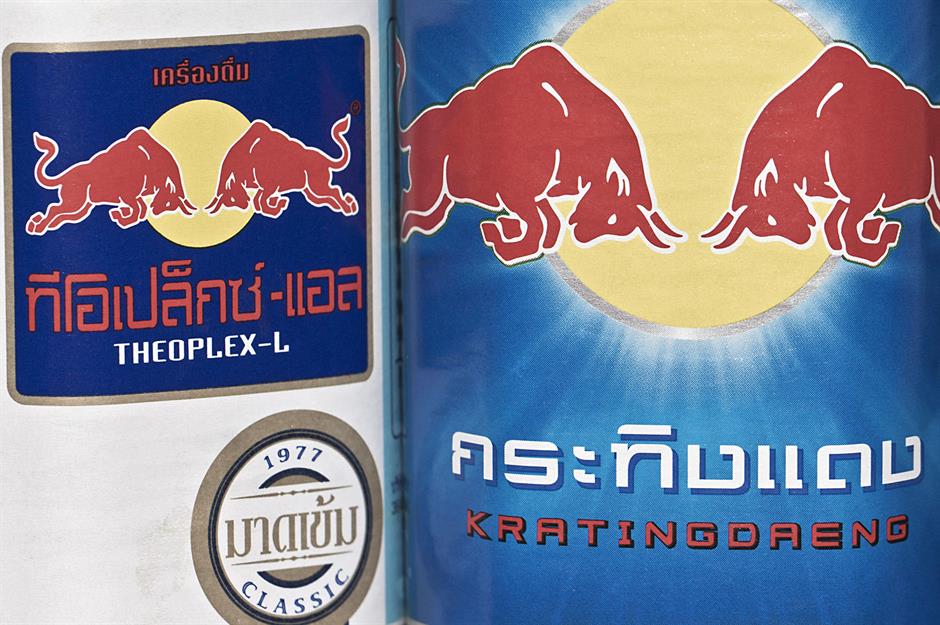
Convinced it would be a big hit in Europe and other parts of the world, he persuaded Yoovidhya to partner with him on a Western version. Yoovidhya would look after production, while Mateschitz would handle distribution and marketing.
Seeking funding for the beverage, Mateschitz approached several Western investors. But they all turned their noses up at the drink, which they believed had no market outside Thailand.
Red Bull GmbH is born
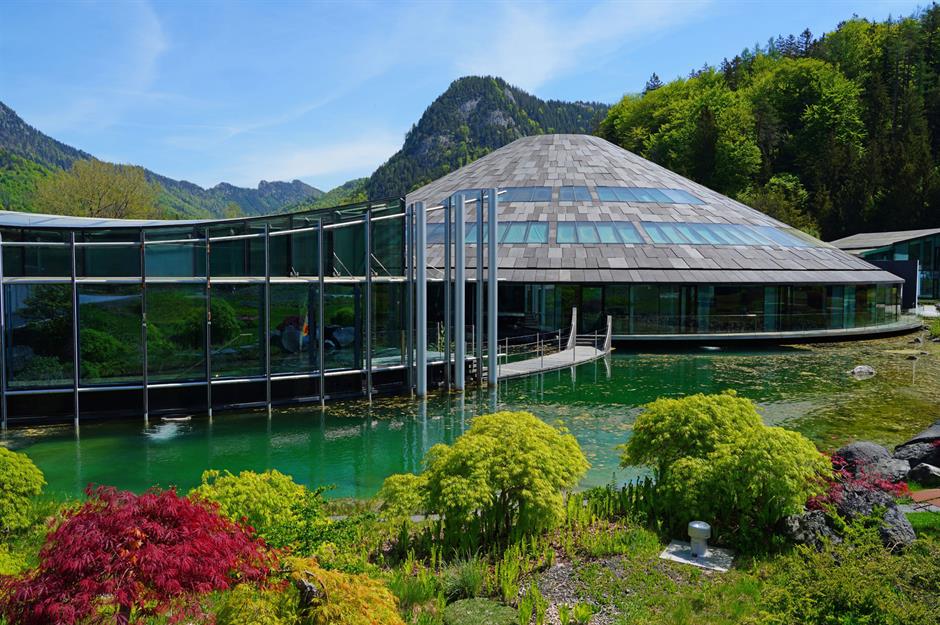
With startup funding non-existent, Mateschitz and Yoovidhya each invested $500,000, around $1.5 million (£1.2m) today, to form Red Bull GmbH, which came into being in 1984 in the Austrian village of Fuschl am See (it's still based there in this swish building). The partners would each own 49% of the Austria-based enterprise, while Yoovidhya's son Chalerm would hold the remaining 2%. This gave the Yoovidhyas the controlling stake.
In retrospect, putting up their own money was a blessing in disguise as it meant the partners could reap the rewards when Red Bull took off without sharing the fruits of their labour with outside backers.
Red Bull's development phase
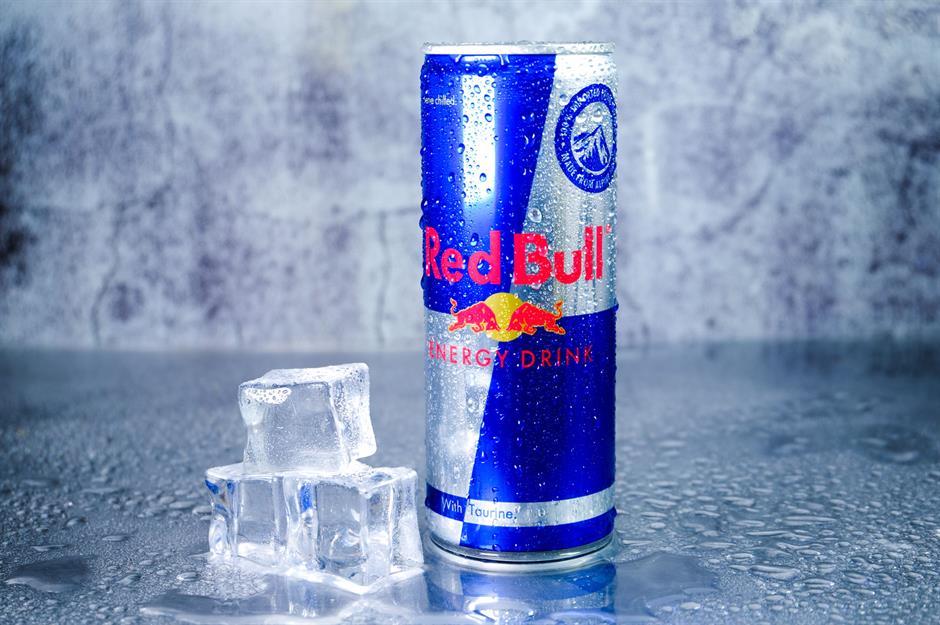
Mateschitz got his head down and worked on the ingredients, packaging, brand positioning and marketing, collaborating closely with German ad agency Kastner & Partners, run by his friend Johannes Kastner. He tweaked the formula, making it less syrupy, created a wholly unique flavour, and carbonated the drink to entice the fizz-loving Western palate.
Krating Daeng's small brown bottles were swapped for tall, slender cans, but Mateschitz made only minor adjustments to Yoovidhya's emblematic logo. As for the name, "Red Gaur" clearly wouldn't work since the animal is almost unheard of in the West, so Mateschitz opted to call the beverage Red Bull. The icing on the cake was the slogan “Red Bull Gives You Wings”, coined by Kastner.
Red Bull launches in Austria
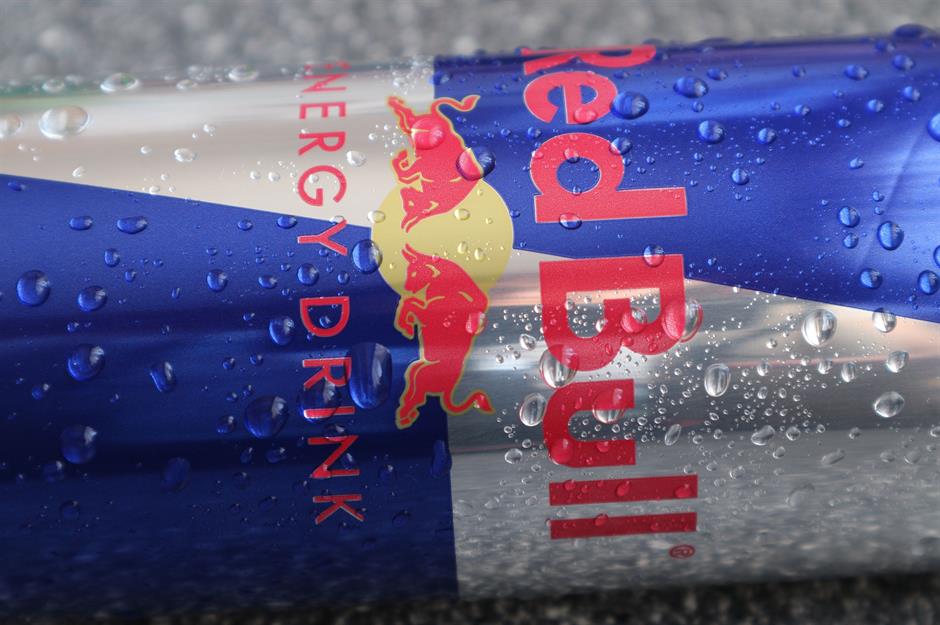
Instead of positioning the drink as a cheap pick-me-up, Mateschitz decided Red Bull would be aimed at young and moneyed party people, extreme sports enthusiasts, and other affluent thrillseekers. In keeping with the target clientele, the beverage would command a premium price. With little in the way of a marketing budget initially, promotion would be super-creative and non-traditional, creating a buzz around the brand without spending a fortune on conventional advertising.
Developing the product and obtaining a licence to sell it in Austria took three arduous years. Red Bull finally launched in the country on April Fool's Day 1987, no doubt to the derision of those sceptical investors. But Mateschitz and Yoovidhya would go on to have the last laugh...
Red Bull's unconventional marketing
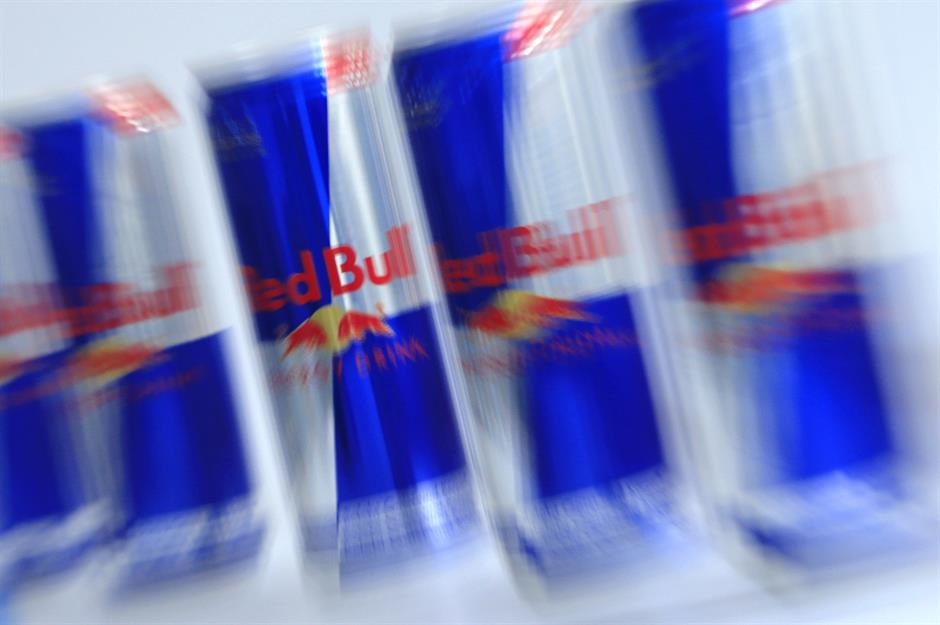
Lacking the budget to advertise on TV, Mateschitz used guerrilla, grassroots, and other unconventional marketing techniques to promote the brand. Relying on word-of-mouth to get the Red Bull name out there, he targeted upscale ski resorts, hip bars, and nightclubs. Clubbers in the burgeoning dance music scene embraced the beverage in a big way.
At the time, Red Bull was banned or unapproved in several European countries, including Germany, due to concerns over its perceived stimulant effect and high taurine content. Ironically, the ban worked wonders on the brand.
Red Bull's German following and first sports team sponsorship
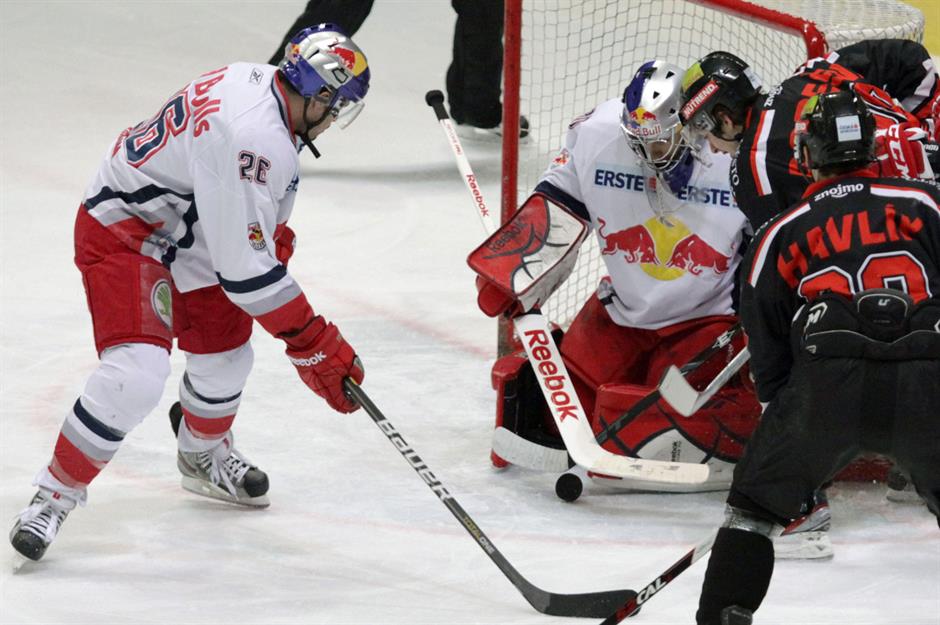
German clubbers were so hyped up about the forbidden fruit that nightclubs in the country reportedly smuggled cases of Red Bull over the Austrian border and sold the drink illegally.
Meanwhile, Mateschitz set about aligning the drink with the sports world to boost its visibility and create a strong brand association with adventure and excitement. Red Bull duly sponsored its first team, Austrian ice hockey's EC Salzburg, during the 1987-88 season. It would be the first of numerous Red Bull sports team sponsorships, and Red Bull eventually bought EC Salzburg outright.
Red Bull's first event

Mateschitz's left field approach certainly worked, generating sales of more than a million cans of Red Bull in the first year.
In 1988, Mateschitz dialled up the brand's marketing strategy and held its first event, the Red Bull Dolomitenmann, an extreme sports relay race in Austria's Dolomite Mountains, billed as the toughest of its kind. Aligning Red Bull with extreme sports was a masterstroke that solidified its reputation as a drink for adrenaline junkies, as well as more casual sports players and the party crowd.
Red Bull's first athlete sponsorship
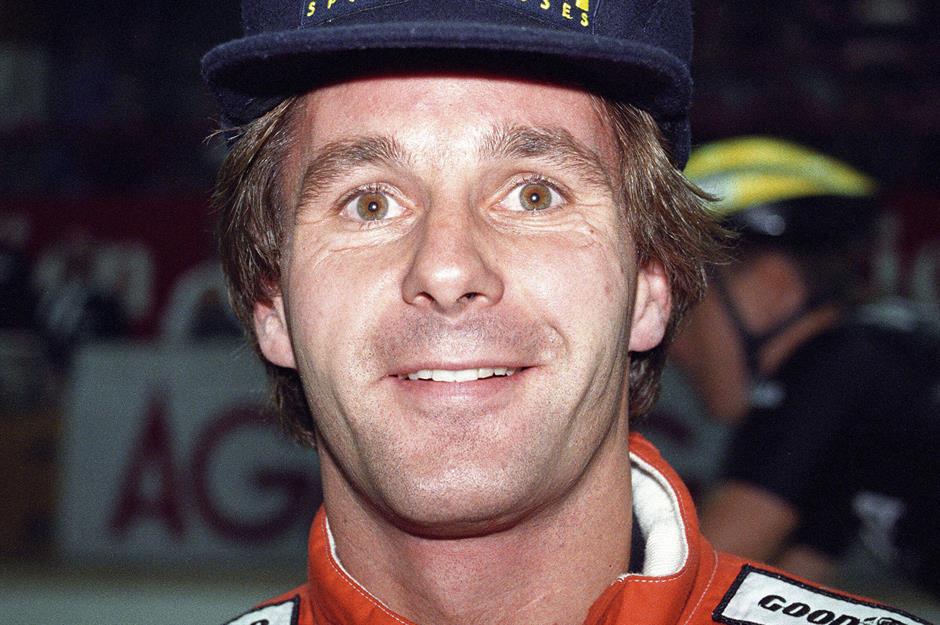
Mateschitz's next stroke of marketing genius came in 1989 when Austrian racing veteran Gerhard Berger became the first athlete to be sponsored by Red Bull. The deal also marked the brand's first foray into F1. After bankrolling Austrian athletes for five years, Red Bull went international in 1994, striking deals to support two world-class windsurfers: America's Robby Naish and Denmark's Björn Dunkerbeck.
Today, Red Bull sponsors over 800 athletes and daredevils, from motorsports stars to football players, snowboarders, surfers, and base jumpers.
Red Bull goes global, launches Flugtag and debuts its cartoon ads
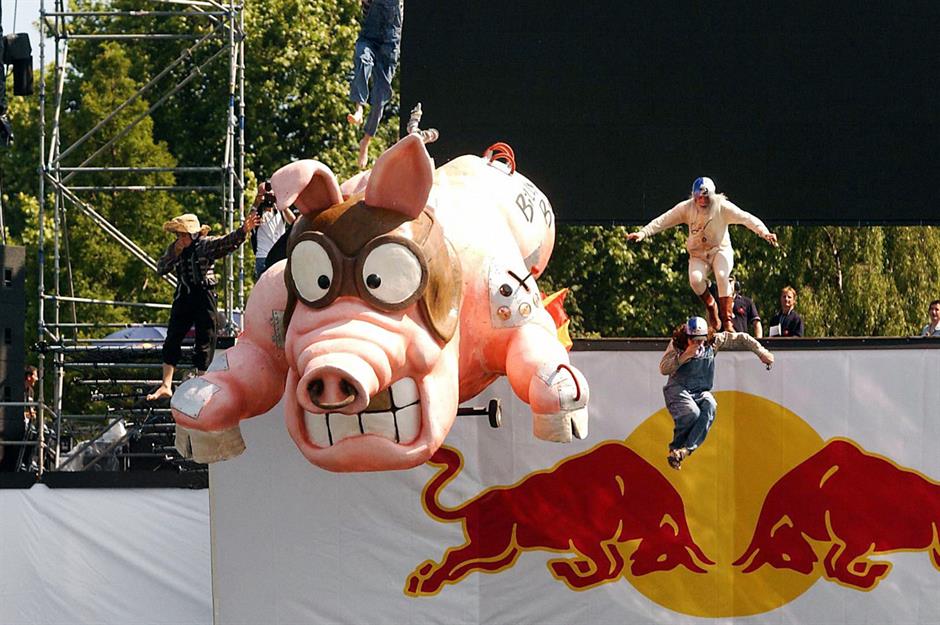
The year 1992 turned out to be momentous for Red Bull. The drink was launched in Slovenia and Hungary, heralding the start of its international expansion.
Red Bull unleashed its wacky Flugtag airshow in Vienna – the event has since been held in scores of cities around the world – and debuted the first of its much-loved cartoon ads, featuring an animated Leonardo da Vinci, together with the “Red Bull Gives You Wings” slogan. The first Red Bull print ad dates from 1987, but featured a different tagline: “So awesome that polka dots will literally fly off your tie!”
Red Bull arrives in the UK and Germany
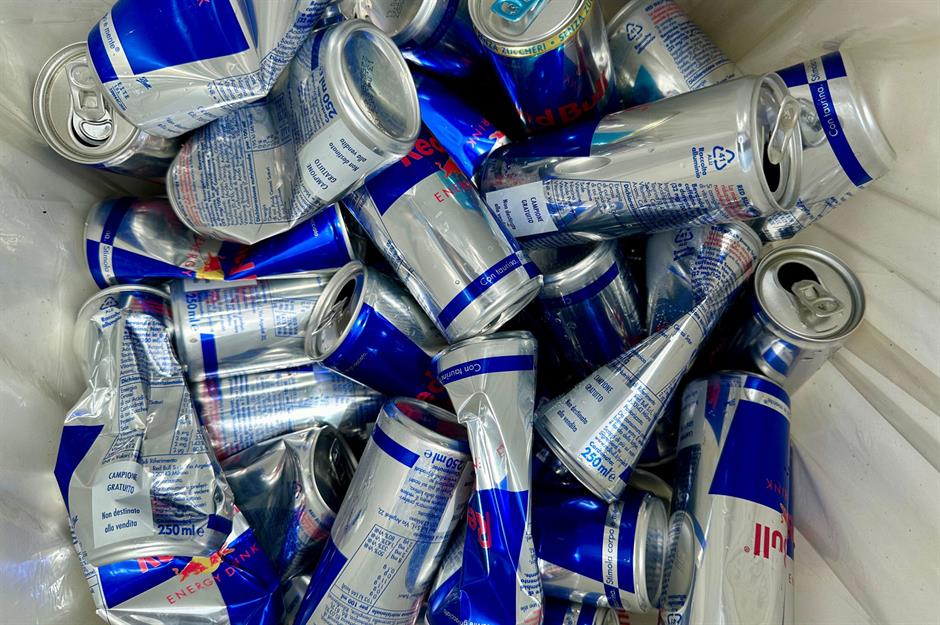
With regulators in many countries softening their stance on the drink, Red Bull's international expansion ramped up. In 1993, the beverage was launched in the UK market. To promote the drink, empty Red Bull cans were strewn in bins around London's top nightclubs, giving the impression the refreshment was ridiculously popular among the city's party crowd.
Red Bull arrived in Germany in 1994. The drink was already well-known in the country, having developed a cult following. Sales soon topped a million cans a day. According to Forbes, Red Bull struggled to meet the intense demand.
Red Bull's F1 team sponsorship
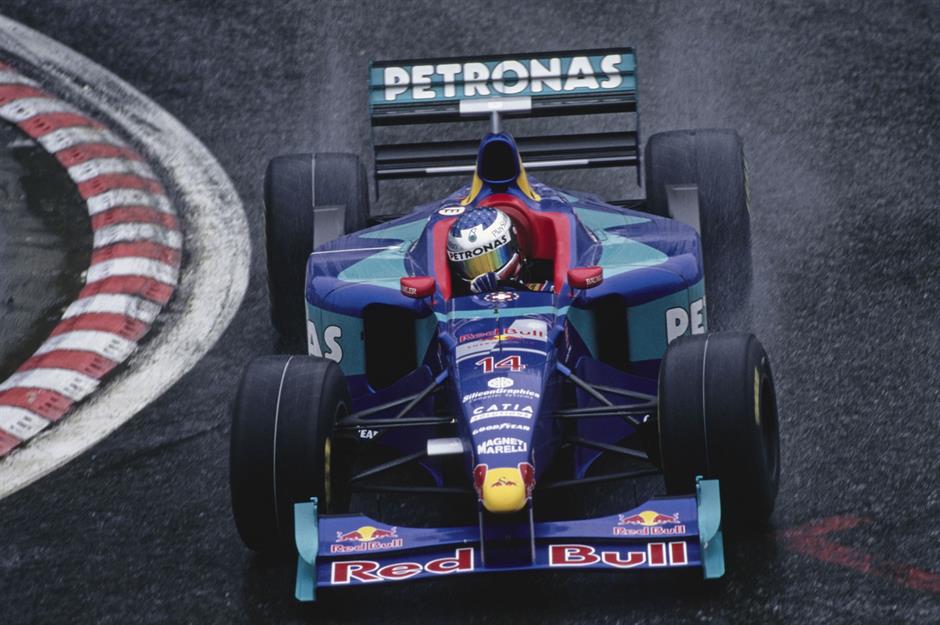
By 1995, Red Bull sales across its European markets had reportedly grown to $85 million, the equivalent of $175 million (£133m) in 2024. At this time, the company had between 20 and 30 staff, compared to the 17,848 it boasts today.
That same year, Red Bull went full throttle with its F1 ambitions, partnering with the Swiss Sauber racing team. The team delivered its first podium finish not long after, tying in nicely with the product's launch in Switzerland.
Red Bull debuts in the US
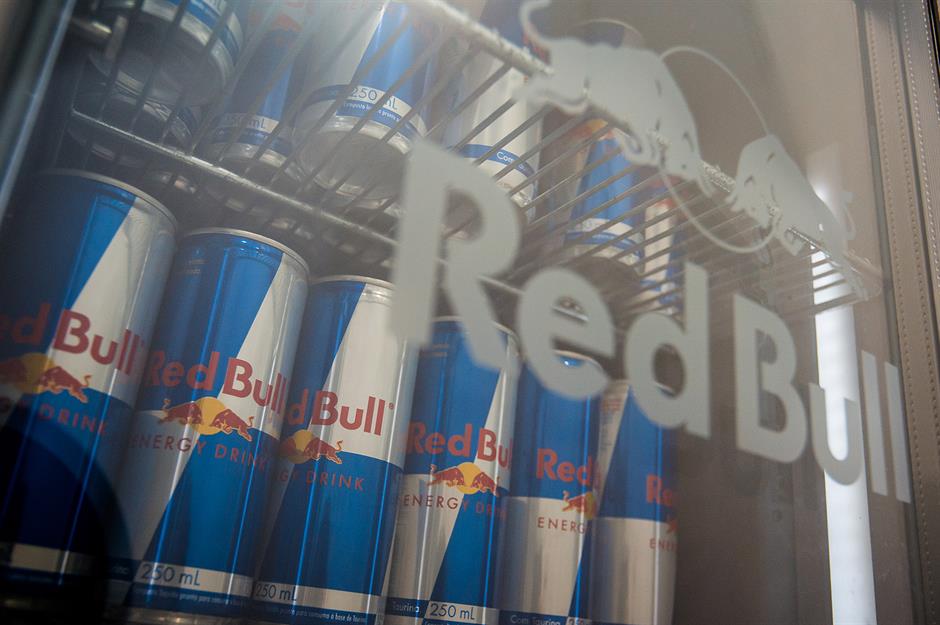
Business in Europe was booming. This fact didn't escape US drinks distributor Jack Dadam, who noticed the beverage was everywhere while on a trip to the continent in 1995. Eager to bring it to America, Dadam clinched a deal with Mateschitz and Red Bull debuted Stateside in the spring of 1997, starting with California, Arizona, and Utah. The company invested $50 million, equivalent to $98 million (£75m) today, to get up and running in the country.
The product was a hard sell at first, with energy drinks a totally new concept for US consumers who were raised on sodas like Coca-Cola and Pepsi. So, to make an impact, Red Bull had to get even more creative with its marketing...
Red Bull's super-creative US marketing
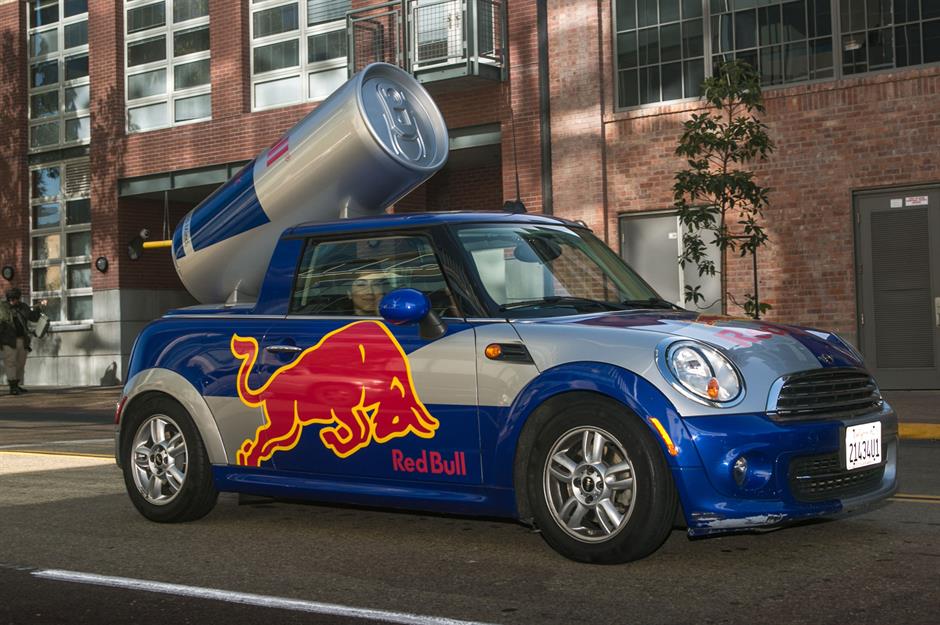
All sorts of gimmicks and marketing tricks were deployed. Distribution was selective at first, concentrating on trendy nightclubs and bars. The infamous vodka Red Bull became the alcoholic drink du jour after it was popularised by San Francisco rave bar Butter.
Mimicking a strategy that had worked in Europe, students at leading US colleges were hired as brand managers and later given branded Mini Coopers, each kitted out with a giant Red Bull can on the roof. To maximise its visibility and draw in extreme sports fans, Red Bull started putting on limelight-stealing events in the US.
Red Bull branches out into music
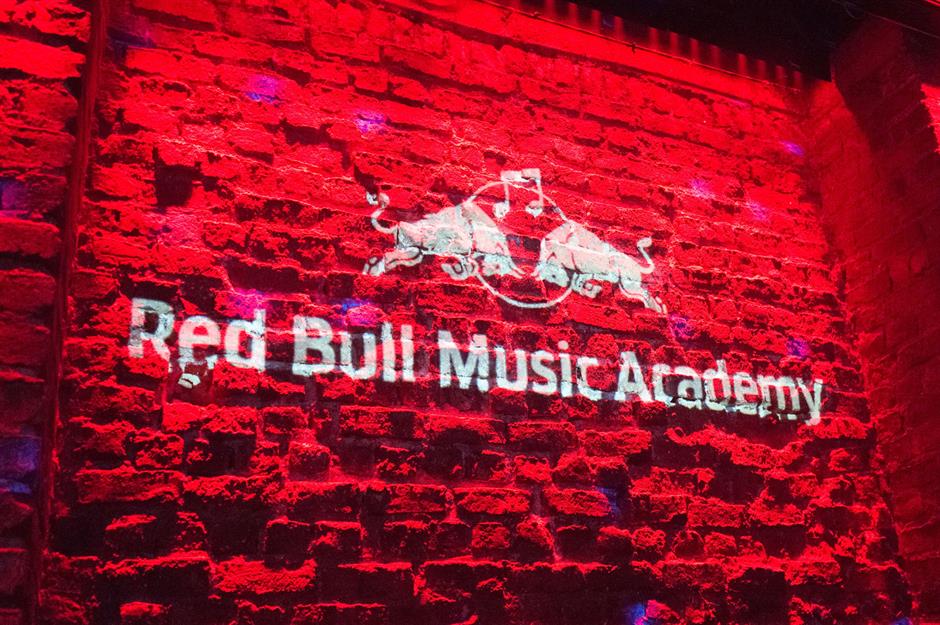
Red Bull began to branch out into music marketing during the late 1990s.
In 1998, Red Bull founded its Music Academy, a roving series of workshops and festivals focusing on up-and-coming artists. The brand has since set up an artist development programme called Red Bull Sound Select, established its own record label to cultivate cutting-edge talent, launched a radio station, and collaborated with established stars. In 2018, Forbes hailed Red Bull as one of the most respected brands in music.
Red Bull sells its billionth can amid mounting competition
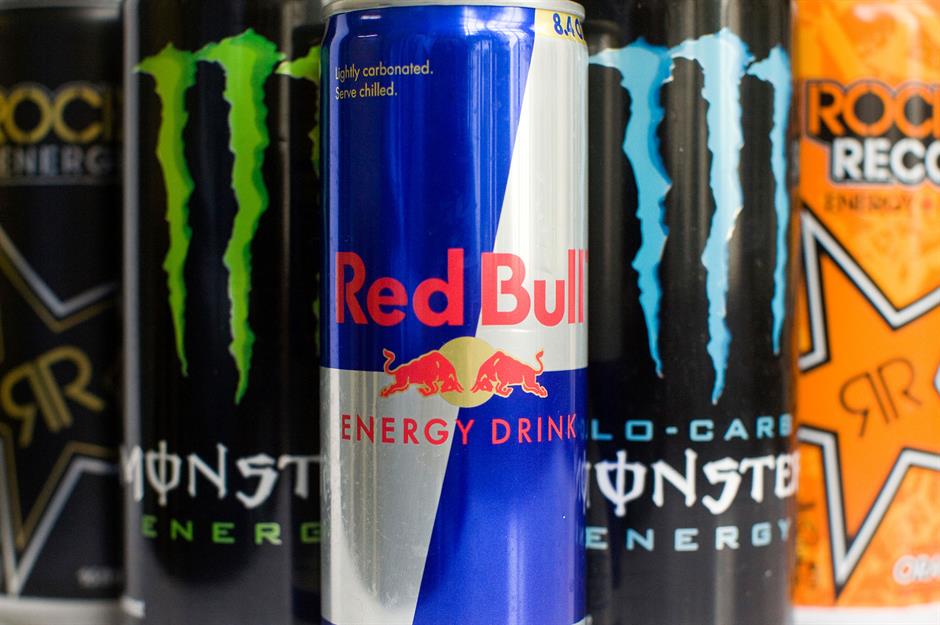
By 2001, Red Bull had expanded to 40 countries and sold its billionth can. In 2002, “the year of the energy drink”, sales skyrocketed by 80%, with 1.6 billion cans shifted across 62 countries. Established names like Coca-Cola and upstarts alike wanted in on the action. That same year, Monster Energy was launched by America's Hansen Natural Company, followed by a slew of additional competitors.
Monster has proven to be Red Bull's leading rival. But while it overtook the winged drink for a time in the US, it hasn't been able to challenge Red Bull's global dominance. By 2002, Red Bull was spending a whopping 35% of its turnover on marketing, giving it a distinct edge. And the company still splurges between a quarter and a third of its revenue in this area. Though it's also a major extreme sports and music sponsor, Monster has never spent that much proportionally. At the same time, traditional drink brands devote even less to promotion as a proportion of their total budgets.
Red Bull's founders become billionaires and Hangar-7 opens
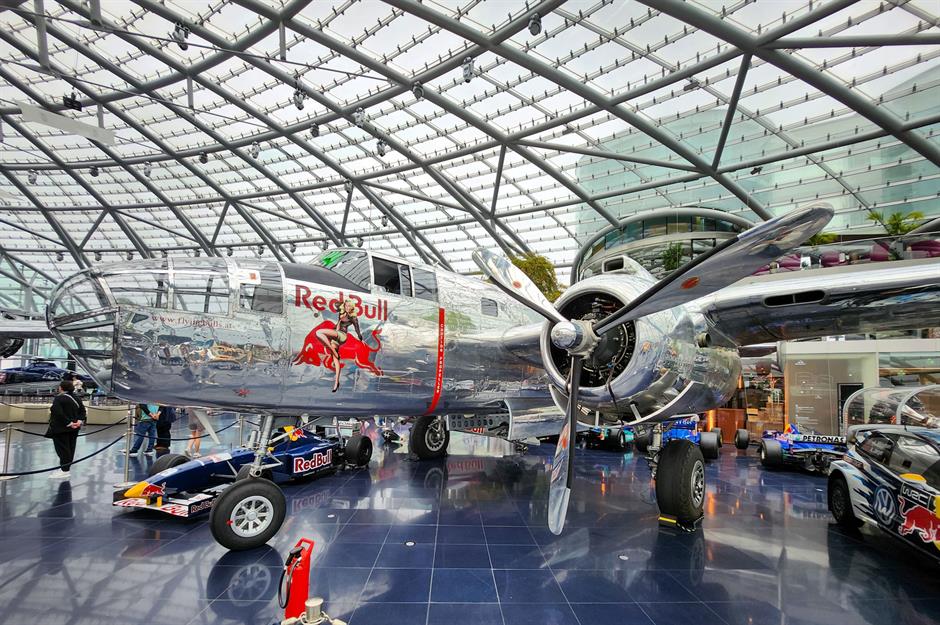
As Red Bull's revenues surged, so did the respective fortunes of its founders. In 2003, Mateschitz and Yoovidhya debuted on the annual Forbes list of the world's billionaires. The publication pegged Mateschitz's wealth at a cool billion dollars, around $1.7 billion (£1.3bn) today. Yoovidhya's net worth was estimated slightly higher at $1.1 billion, the equivalent of $1.9 billion (£1.4bn) in 2024, with Forbes likely factoring in the Thai businessman's Krating Daeng riches.
Mateschitz was riding high in 2003, the year his spectacular pet project, Hangar-7 at Salzburg Airport, opened. Built to house Red Bull's Flying Bulls, its fleet of restored classic aircraft, the unique venue also boasts a collection of F1 racing cars, a Michelin-starred restaurant called Ikarus, a café, two bars, and several lounges.
Red Bull's annual revenue surpasses a billion dollars
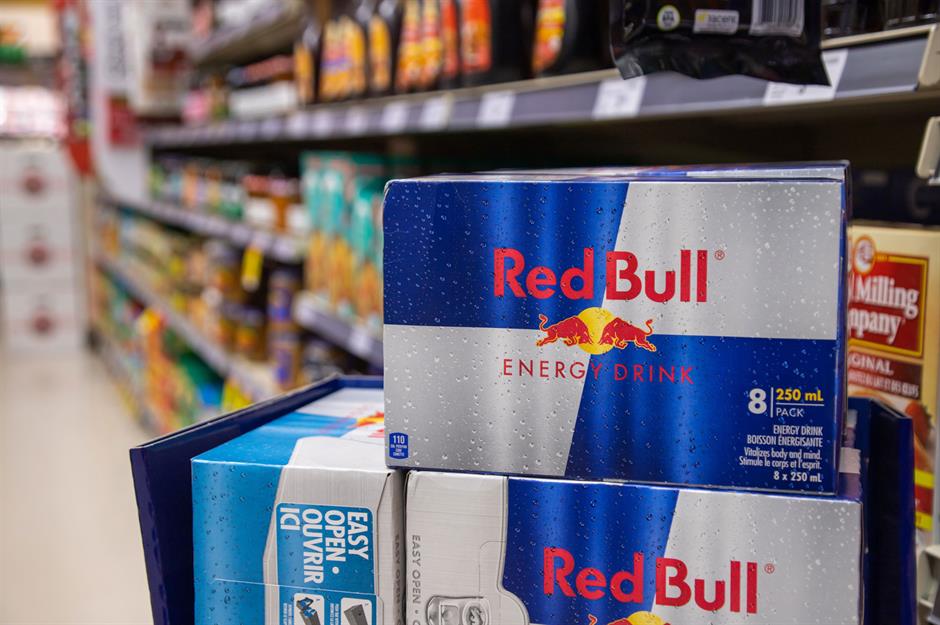
In 2003, the same year its founders joined the billionaire club, Red Bull became a billion-dollar company by revenue when its global sales climbed to $1.3 billion, around $2.2 billion (£1.7bn) today. Turnover increased a further 30% in 2004, coming in at $1.7 billion, which translates to $2.8 billion (£2.1bn) today. In 2004, 1.9 billion cans of the drink were sold.
That same year, Red Bull launched in Canada. By this point, the drink was available in 120 countries.
Red Bull buys its own F1 racing team
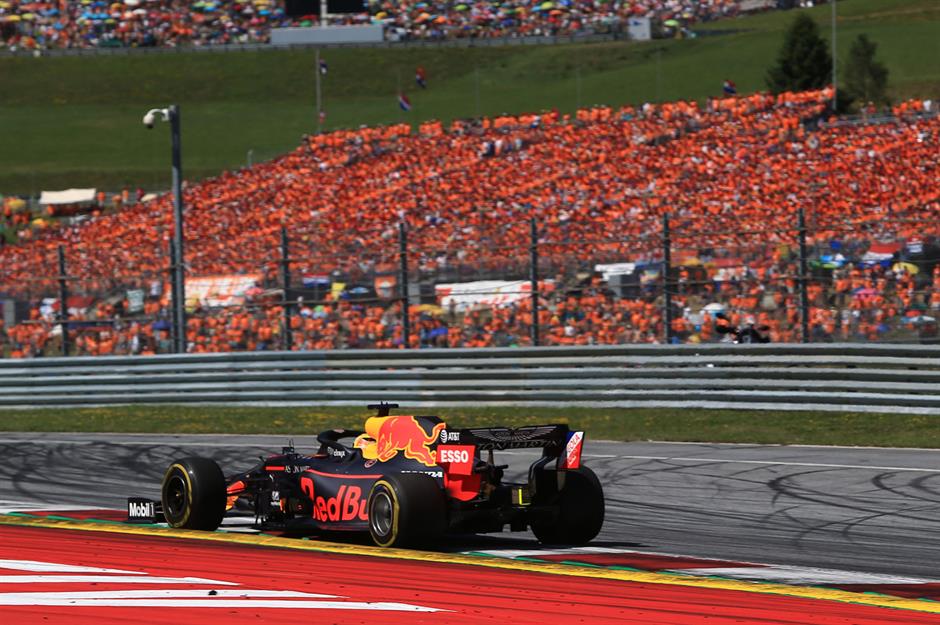
In 2005, Red Bull snapped up the Jaguar Racing F1 team from Ford Motor Company. The brand now had its very own top-level racing team. From the get-go, the team has been headed by former driver Christian Horner. In 2006, Red Bull acquired Italy's Minardi F1 team. Originally called Scuderia Toro Rosso, the constructor, which is now known as the RB F1 Team, is a junior team to Red Bull Racing.
Toro Rosso's Sebastian Vettel scored the team's first win in 2008 and triumphed again for Red Bull Racing at the Chinese Grand Prix in 2009. Since then, the team has become one of the most successful in modern times, winning both F1 Constructors' and Drivers' Championships in 2010, 2011, 2012, 2013, 2022, and 2023.
Max Verstappen, Red Bull's superstar driver, is the current world number one. According to Forbes, Red Bull Racing was the third most valuable F1 team in 2023, valued at $2.6 billion (£2bn).
Red Bull purchases soccer teams and more
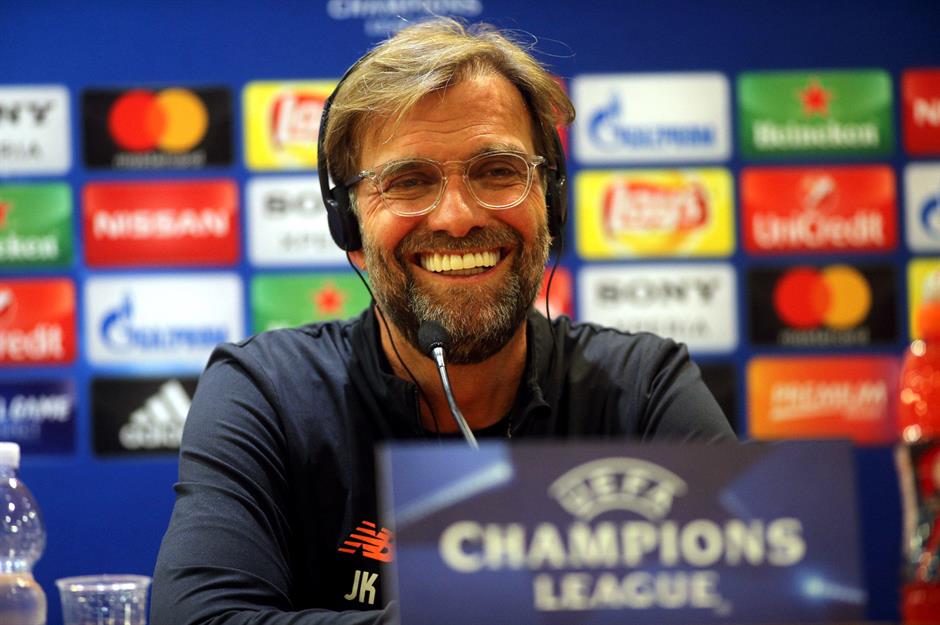
Red Bull embarked on a sports team spending spree in 2005, purchasing Austrian Bundesliga club SV Austria Salzburg, which was renamed FC Red Bull Salzburg. The team has flourished under its ownership, winning 14 league titles in 19 seasons, including 10 in a row from 2014 to 2023. The club has also nurtured top talent, including Manchester City's Erling Haaland.
Red Bull has also since acquired the New York Red Bulls MLS team, two Brazilian clubs, Austrian Second League side FC Liefering, German Bundesliga team RB Leipzig, and a minority stake in English Championship club Leeds United. To oversee its soccer interests, the company has just hired German former professional manager and player Jürgen Klopp (pictured) as its global head of soccer. Klopp, who is set to assume the role on 1 January 2025, will "focus on supporting the sports directors in advancing the Red Bull philosophy", according to a press release.
Aside from F1 and soccer, Red Bull owns or heavily sponsors numerous teams across a variety of sports, from ice hockey, basketball, and cycling teams to NASCAR and e-sports outfits.
Red Bull's multimedia empire
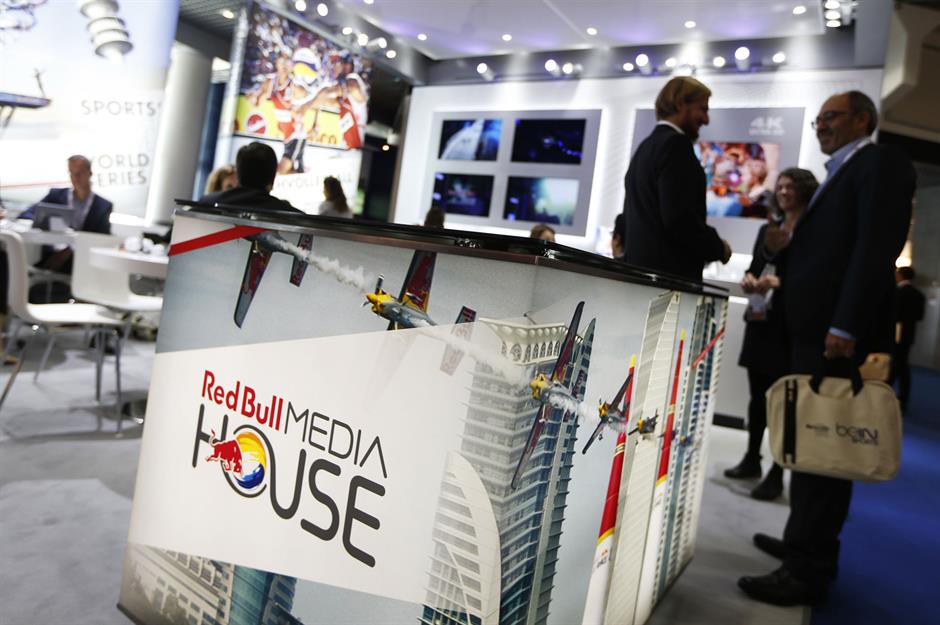
During the latter half of the 2000s, Red Bull doubled down on multimedia content creation. In 2007, Red Bull Media House was launched. Described as “the King of Content”, the company's sprawling media platform produces a bewildering range of top-quality content, from one-off documentaries, TV and web series, live broadcasts and webzines, to print magazines and books.
Bursting with compelling content, Red Bull's social media channels have spawned viral video after viral video, and Red Bull was the most shared video brand in 2016. In terms of followers or subscribers, Red Bull beats its biggest competitor, Monster Energy, enjoying a significant advantage on Facebook (49 million followers vs Monster's 25 million), Instagram (24 million followers vs Monster's 9.3 million), YouTube (18.4 million subscribers vs Monster's 3.4 million) and Gen Z favourite TikTok (14.3 million followers vs Monster's 3.4 million).
Red Bull diversifies and continues to expand through the 2010s
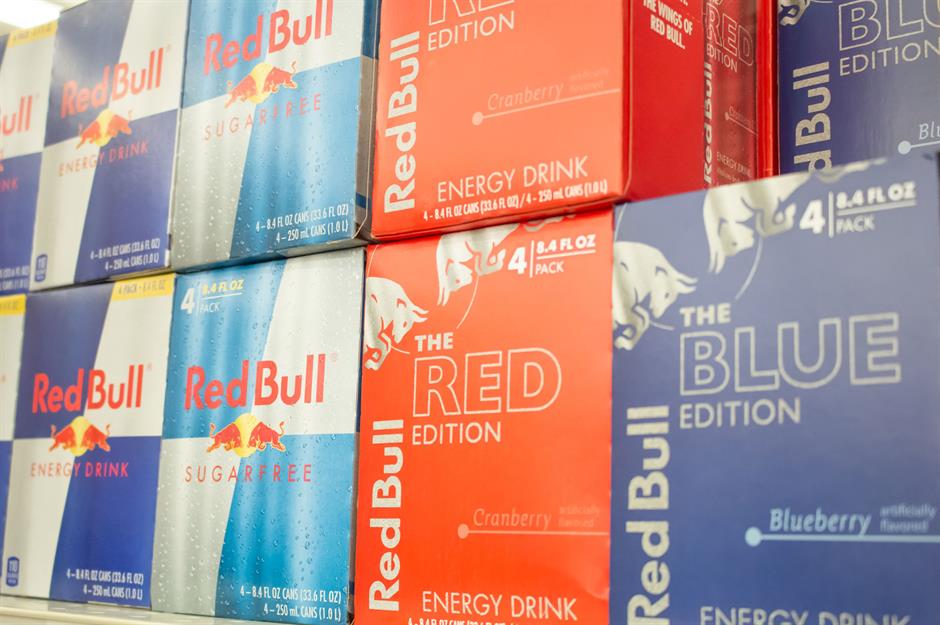
Red Bull went from strength to strength in the 2010s. A variety of new flavours of the iconic drink were launched to cater to ever more diverse consumer preferences.
Red Bull continued to engage with its innovative marketing approach and the energy drink's global expansion continued apace, while the Austrian company simultaneously increased its commitment to sustainability. Red Bull ended the 2010s on top of the world, with 7.5 billion cans sold in 2019, up from 4.2 billion in 2010. But although there were plenty of highs, Red Bull had its fair share of low points during the 2010s.
Red Bull's 2010 headwinds and the death of Chaleo Yoovidhya
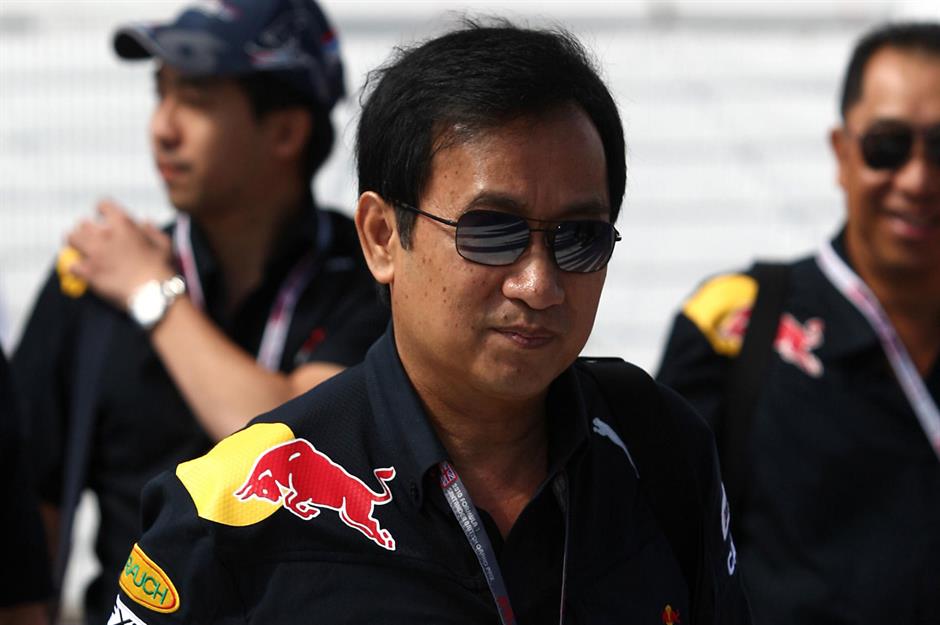
Red Bull had to fend off even fiercer competition during the decade and grapple with health concerns over the drink. It became embroiled in several high-profile legal battles, from IP disputes to false advertising allegations.
In March 2012, co-founder Chaleo Yoovidhya passed away, having amassed a fortune of $5 billion (£3.8bn). According to Bloomberg, Yoovidhya's 49% stake in the company passed to 10 members of his family. With his son Chalerm (pictured) holding an additional 2%, the clan has maintained control of the business. Among the heirs is Chalerm's son, Vorayutha. In 2012, he was involved in a hit-and-run accident that killed a police officer. He fled Thailand in 2017 and is still at large.
Red Bull pulls off the Stratos jump, its most daring and spectacular stunt ever
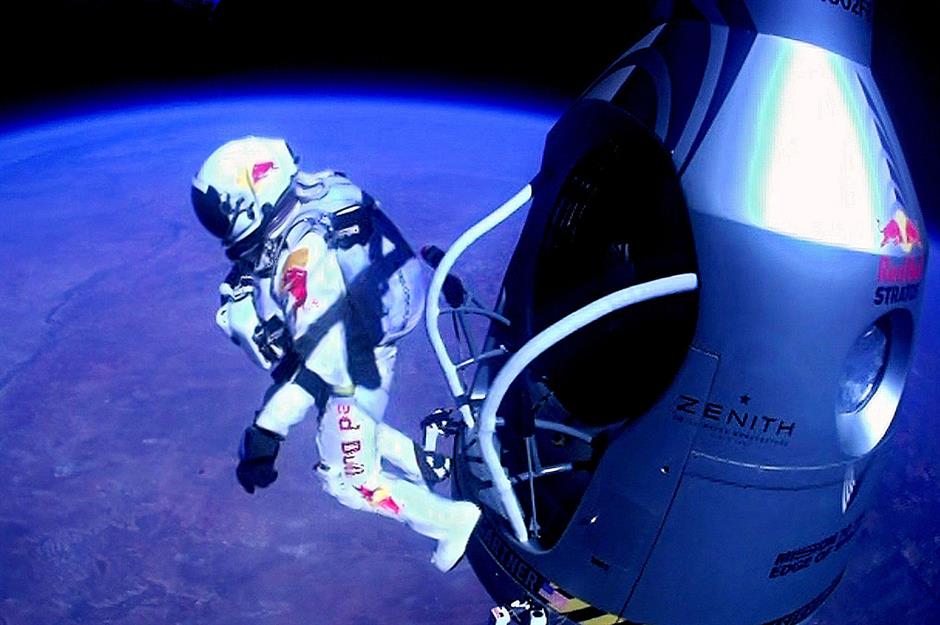
Several months after Yoovidhya's death in 2012, Red Bull wowed the world with its most audacious stunt yet: the breathtaking Stratos jump. The $30 million (£23m) project saw Austrian skydiver Felix Baumgartner leap to Earth from a helium balloon at a height of 24 miles (39 km), breaking the world record for the highest altitude jump.
The freefall was a must-see global event, setting a YouTube livestream viewership record with millions tuning in to watch. A massive marketing success for Red Bull, the event reportedly generated more than $500 million (£387m) in additional sales. Testament to the power of Red Bull, the video of Alan Eustace's 2014 stratosphere jump, which broke Baumgartner's record, ended up garnering a fraction of the views.
Red Bull's pandemic resilience and the death of Dietrich Mateschitz
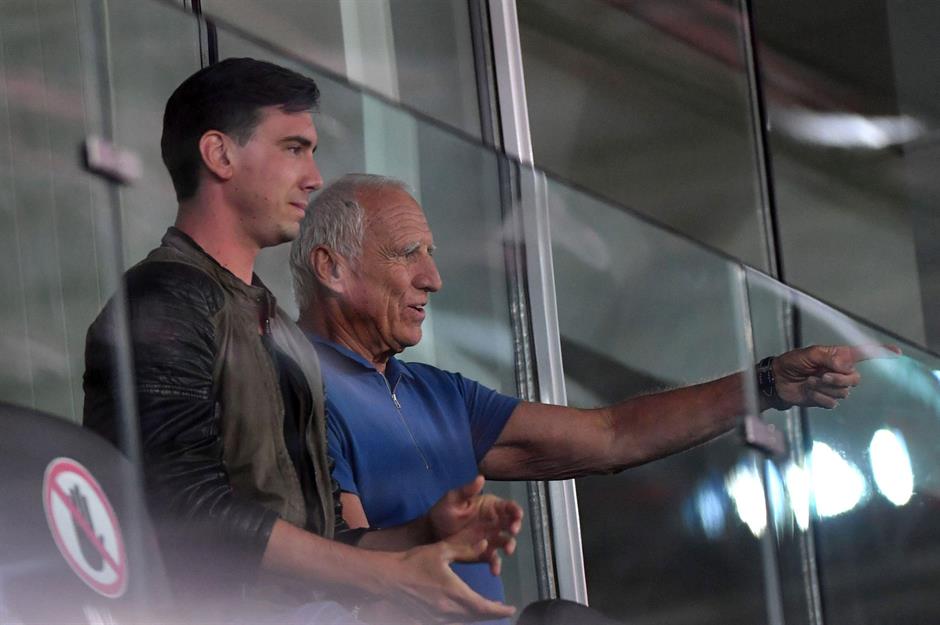
Defying expectations, Red Bull thrived during the COVID-19 pandemic and even managed to get in some awe-inspiring stunts, including the first plane flight through a tunnel, which Italy's Dario Costa pulled off in 2021.
Marking the end of an era for Red Bull, Dietrich Mateschitz died in October 2022, a decade after his fellow co-founder. He also left this world a very rich man. Forbes pegged his wealth at $20.2 billion (£15.3bn). Mateschitz's son Mark inherited his 49% Red Bull Stake, becoming Europe's wealthiest Millennial in the process. He agreed with the Yoovidhyas to step back and concentrate on his shareholding while a trio of top executives were appointed to run Red Bull.
Red Bull's stratospheric success
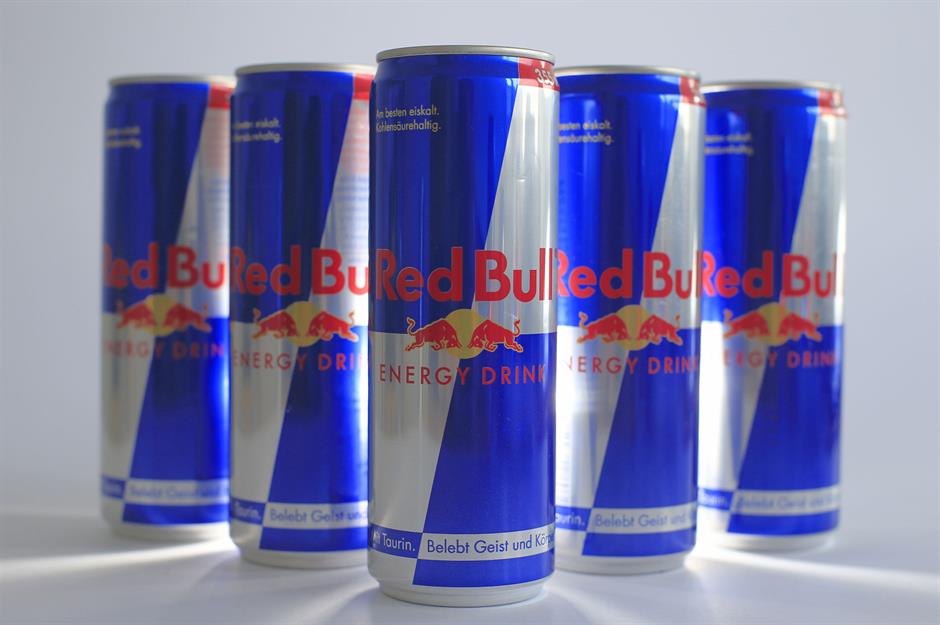
So much more than an energy drink, Red Bull is now a vast conglomerate that encompasses sports teams, athletic sponsorship, a media empire, events business and myriad interests besides, including a clothing line and career support website. But the stimulating elixir remains at the crux. Now available in over 175 countries, the world's leading energy drink has sold well in excess of 100 billion cans, and a record 12.1 billion cans were shifted last year. Group annual revenue broke records too, hitting $11.8 billion (£8.9bn).
Needless to say, Red Bull's owners are absolutely rolling in it. Mark Mateschitz is currently worth a staggering $39.7 billion (£30.4bn) according to Forbes. The combined wealth of the Yoovidhyas is likely to be even greater given their larger stake. And with Red Bull showing zero signs of slowing down, not even the sky is the limit for the planet's favourite energy drink.
Now discover where all 20 of 2024's F1 drivers rank on our rich list
Comments
Be the first to comment
Do you want to comment on this article? You need to be signed in for this feature